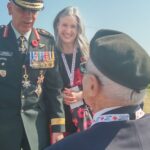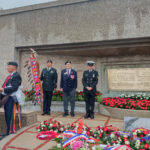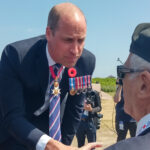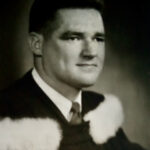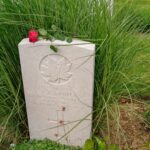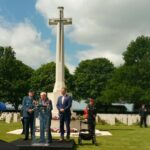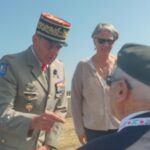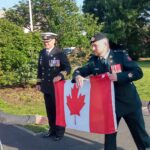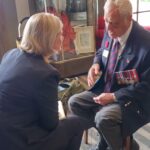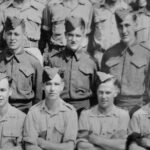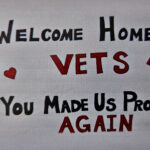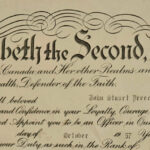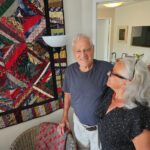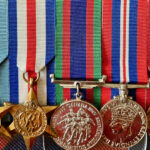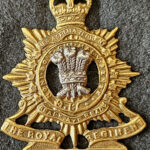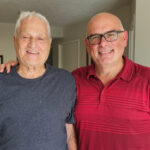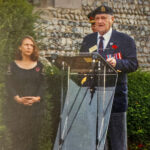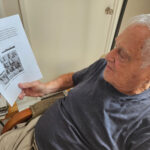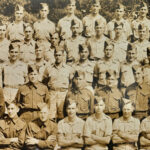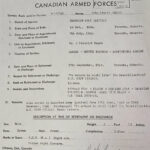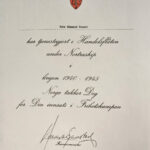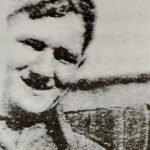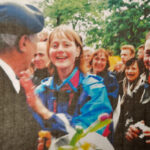John Preece was born October 19, 1926 in Toronto’s Queen-Bathurst neighbourhood. John’s early life was not easy, largely because of family circumstances. His mother had emigrated from Scotland, and – alone in Toronto – she fell into a relationship with a married man and turned to alcohol. John does not have many positive memories of that portion of his life, and as a teenager he ran away from home. Prior to that decision he had attended Ryerson Public School in Toronto, and after leaving Grade 8, he worked at the Inglis Factory during the early war years. Unhappy with these directions, John sought out the merchant marine in 1941, joining up as a mess boy with the Norwegians when he was just 15. He completed three trans-Atlantic crossings, one to the Mediterranean and two to Wales; during those voyages he fed the crew and kept the cabins clean – and confronted the threat of U-boats and bad weather. Back in Toronto on leave, he met a soldier who was on a recruiting drive for the Canadian army, and John decided to join up. He reported to the No. 2 District Depot in Toronto, and then he was off to training in Brantford and Camp Borden. After that he reported to Camp Debert in Nova Scotia, and the men boarded the Ile de France for the journey to England, after which they went to Camp Aldershot before heading across the Channel on a glider in the early months of 1945. They arrived in Belgium and were soon deployed to the front lines in Belgium and Holland: John describes combat as an awakening and his memories of his 18-year-old self in combat for the first time are compelling. He advanced through those areas in Belgium, Holland and Germany as a soldier of the Royal Regiment of Canada, taking part in the liberation of villages and towns. On April 2, 1945 his part in the front-line war came to an end when he was shot in the upper arm by a sniper. John would spend the rest of the war in treatment, going through various hospitals and surgeries. He returned to Canada shortly after the war concluded, having volunteered for service in the Pacific. The atomic bombs obviated that possibility though; still John remained in the service corps for a time, as he struggled to find meaning in his life. He did return to school in the end, first getting his high school equivalency, and then going on to complete a degree in engineering – and leaving the past behind him. Later he met Bonnie, and the two of them married and raised their family, finding their way into the rhythms of postwar Canadian life.
Videos
Click next video below to keep watching

